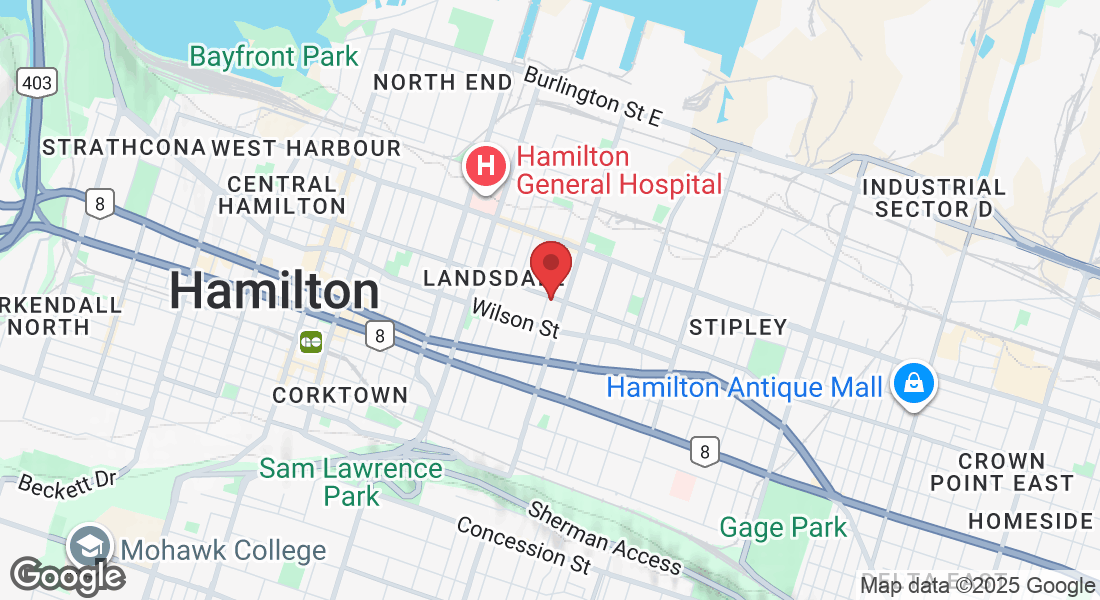HART Hub
Frequently Asked Questions
Response Summary: Frequently Asked Questions
This document provides clear and concise answers to the most common questions received about the Hamilton HART Hub - Residential Treatment and Recovery Services. It is designed to offer transparency, clarify key details, and ensure all stakeholders have consistent and accurate information regarding the programs and services.
Who oversees the HART Hub Residential Treatment and Recovery Services program?
Response: The HART Hub Residential Treatment and Recovery program is operated by Hamilton Urban Core Community Health Centre, a non-profit, community-governed organization with a Board of Directors. The program is also part of the provincial HART Hub initiative, meaning it is accountable to both community governance and provincial government oversight.
How is this program funded? Is taxpayer money being used?
Response: Yes. The HART Hub Residential Treatment and Recovery Program is publicly funded as part of the Province of Ontario’s investment in addiction treatment and recovery services. It forms part of the broader Hamilton HART Hub initiative, a low barrier, trauma-informed, culturally responsive healthcare model that integrates a suite of services for clients with complex service needs such as: primary care, mental health, substance use treatment, housing with supports, shelter beds, and systems navigation for health, social and employment services.
Hamilton Urban Core receives government funding to deliver primary care, community health, and mental health and addiction services, ensuring equitable access for those who need care.
What is the relationship between the landlord/owner of 276 Aberdeen Avenue and the Board of Directors and Leadership at Hamilton Urban Core Community Health Centre?
Response: There is no previous or existing personal, professional, or financial relationship between the landlord and/owner of 276 Aberdeen Avenue and any
member of the Board of Directors or the Leadership of Hamilton Urban Core Community Health Centre. All parties operate independently, and there are no conflicts of interest in connection with the lease of this property.
What was the process for identifying the location for the HART Hub Treatment and
Recovery Services?
Response: A Real Estate Agent was engaged to conduct the search process, on behalf of Hamilton Urban Core, to identify a suitable location for the HART Hub – Residential Treatment and Recovery Services. Search criteria were provided to the agent in keeping with provincial guidelines and evidence-based harm reduction models, which show that client recovery is more effectively supported in community and residential settings compared to institutional environments, such as hospitals.
What other sites were considered in the site selection? What was the decision-making process?
Response: Several potential sites were reviewed during the preliminary planning phase. Each option was assessed based on key factors such as suitability of the physical space, zoning requirements, and overall alignment with program needs. Following this review, the selected site was identified as the most appropriate location based on its availability, cost-effectiveness, and its potential to support safe, accessible, and high-quality service delivery. The decision-making process was guided by organizational due diligence, in keeping with Funder and program requirements and a commitment to ensuring that the chosen site best meets the needs of the individuals we serve and the broader community.
Why were the residents not informed before the location was selected?
Response: The site selection process followed standard due diligence steps, including evaluating the condition of the property, and determining whether it met
Funder and program requirements. Residents were not notified before the site was identified because the initial stage focused on confirming that the location was both feasible and appropriate from a regulatory and operational standpoint. Once that process was completed, we immediately moved into community engagement (which is where we are now), to share accurate information, listen to feedback and work together on how the program will be implemented.
What services will be provided inside the facility?
Response: Clients will receive:
- Medical care (nurses, physicians, nurse practitioners)
- Recovery counselling and wellness programming
- Life coaching (life skills, employment, housing support)
- 24/7 /365 monitoring and care
All services follow trauma-informed, culturally safe, recovery-oriented best practices.
Who will the clients be? Will they come from outside Hamilton?
Response: Clients will primarily be individuals from Hamilton and surrounding areas who are struggling with substance use and seeking abstinence-based recovery. Our referral process prioritizes local needs, while also aligning with provincial guidelines.
I’ve spoken to many other residents who are concerned about having these services in our neighbourhood, not because we don’t believe in social causes and helping others, but we think that you should have consulted with us first to get our opinions. We don’t think you handled this the right way and you should at least put a pause this program until after you meet with us and hear what we think and then figure out where you should put the program.
Response: We appreciate residents' concerns and perspectives. While the program planning will not be paused at this stage and will continue moving forward, we are committed to transparent and meaningful community engagement. Now that a location has been identified, we will host meetings and information sessions to hear your feedback and answer questions.
Our goal is to ensure the program operates safely and respectfully, supporting both individual recovery and the well-being of the neighbourhood.
What is the HART Hub – Recovery and Treatment Service and is it safe for it to be in our neighbourhood where families and children reside?
Response: The purpose of the program is to support individuals dealing with substance use and mental health challenges who would like to receive treatment to recover from addiction and improve their overall well-being. The program uses an abstinence-based treatment model to address both the physical and emotional aspects of client recovery. There are supports and resources in place such as clinical services provided by physicians, nurses, counsellors, and other team members to support client recovery. Additional supports include: 24/7/365 onsite security guards to ensure client and community safety. Ensuring community safety is a high priority for the Hamilton Urban Core team.
What makes this program different from existing addiction services in Hamilton?
Response: The HART Hub Residential Treatment and Recovery Services is an abstinence-based, intensive residential treatment and supportive recovery program. It offers short-term, bed-based care with 24/7 support, combining clinical services with life skills coaching to foster community reintegration. This complements existing mental health and addictions and outpatient programs offered at the Centre.
This proposed location is a property of historical significance and is 250m from Lyonsgate Montessori school and daycare where I was intending to send my children. It is also 450m from St. Joseph's Catholic Elementary School. How is this an appropriate location for a Homelessness and Drug rehabilitation facility?
Response: Facilities like this one are carefully planned and regulated to ensure they contribute positively to the broader community while addressing critical social and public health needs. We are committed towards ensuring the Residential Treatment and Recovery program operates safely and respectfully within the neighbourhood. This includes maintaining a high standard of care, on-site professional supervision, and collaboration with local stakeholders, including schools, community members, and city officials. There will be onsite security at the property 24/7/365 to ensure community safety.
How can you guarantee neighbourhood safety?
Response: Safety is a top priority. The facility will be drug-free, alcohol-free, and smoke-free, with:
- 24/7 security and staff presence
- Controlled access to the building
- Ongoing collaboration with local safety partners and elected officials.
Our goal is to enhance community safety by providing structured care instead of leaving people without treatment options.
Will there be increased crime, loitering, or disruption in the area?
Response: Research and experience with similar treatment programs show that well-managed facilities with strong security and staff supervision do not increase neighbourhood crime. In fact, they can reduce community strain by offering safe, supervised care that prevents crises in public spaces.
How can neighbours provide feedback or ask questions?
Response: Residents can contact us directly at [email protected]. Feedback will inform how we shape ongoing engagement and neighbourhood partnerships.
When will the program officially open?
Response: The program will open only after all required permits and licenses are secured. We will communicate a clear timeline once approvals are finalized and invite the community to an Open House Engagement Session before launch.
How do we refer someone to your program?
Response: Referrals can be sent to [email protected], and a Counsellor will follow up accordingly.
No drop in intakes or inquiries will be accepted at 276 Aberdeen Avenue program location.
Is residential treatment open?
Response: The Residential Treatment and Recovery Program is not yet open. The official launch date will be announced to the public at least 60 days in advance of opening.
What is the length of stay?
Response: Clients are expected to remain in residence for 8 to 12 weeks, depending on their individual treatment needs, progress, and recovery plan. Residents will participate in a therapeutic holistic program, which includes an evidence-informed six-week treatment curriculum followed by a two-week life redesign
curriculum focused on skills development and transition planning.
Is there an aftercare program post treatment?
Response: Yes. A Comprehensive Transition Plan will be developed and reviewed by clinical staff to establish each client’s post-treatment priorities and support systems. Following treatment, the Life Redesign Coach remains connected with clients to provide ongoing aftercare support. Clients also have access to a suite of services at the health centre at 430 Cannon Street East to promote sustained recovery and successful reintegration into the community.
Resident composition: we would like to know the maximum number of residents. Is the facility going to accommodate more and go over capacity?
Response: In Year One, the program will operate with a maximum of 18 beds implemented through a phased approach to ensure quality and safety. Capacity will be expanded in future phases as the program scales, in alignment with best practices, community needs, and municipal permit approvals. The facility will not exceed its approved capacity at any time. Future capacity is still to be determined and will follow all required regulatory processes.
Why was the occupancy size selected? Will there be double rooming?
Response: The occupancy size was established based on program design principles, clinical best practices, staffing ratios, and building capacity, ensuring a safe, therapeutic, and person-centred environment. The initial configuration of 18 beds allows staff to provide individualized support while maintaining strong oversight and quality of care. The facility includes a combination of single and double-occupancy rooms. Double rooming is designed to foster peer support and community connection where appropriate, while still maintaining privacy and safety.
What is the status of the building at the back of the property?
Response: The building located at the rear of the property will be used for program-related activities and will include multi-purpose spaces such as programming rooms, counselling areas, and an exam room to support resident care and wellness. It will not be used for residential accommodation. All use of the space will remain consistent with municipal approvals and health and safety regulations.
Will a privacy fence be considered?
Response: Yes, a privacy fence is being considered as part of the site planning process. We recognize the importance of maintaining both privacy for program
participants and a sense of comfort for neighbouring residents. Any fencing or landscaping decisions will require Ministry approval and will be made in accordance with local bylaws, safety standards, and the goal of creating a respectful and well-integrated environment within the community.
Will there be a designated smoking area at the property? What will be your cannabis and smoke policy?
Response: The HART Hub Residential Treatment and Recovery Facility will maintain a drug-free, alcohol-free, and smoke-free main building, ensuring a safe and supportive environment for recovery.
However, there will be a designated outdoor smoking area outside the main building, located in the courtyard for use by residents and staff. This controlled area will be clearly marked and monitored to ensure safety and compliance with health and safety regulations. The use of cannabis, alcohol, and other substances will not be permitted anywhere on the property, including the courtyard.
What was the size of the contract award?
Response: The Hamilton HART Hub is part of a broader provincial investment in addiction treatment and recovery services. Funding for the Hamilton site was provided through the Ontario Ministry of Health, and up to $5,000,000 was allocated to Hamilton Urban Core Community Health Centre to support program implementation, staffing, and operations. As a publicly funded, non-profit organization, Hamilton Urban Core operates with full financial transparency and is subject to regular government and Board oversight. An annual independent audit is conducted by a third-party external auditor to provide an unbiased assessment of the organization’s financial performance, ensuring alignment with generally accepted accounting principles and adherence to the terms and conditions outlined in the funding agreements.
When did the lease begin?
Response: The lease for the property located at 276 Aberdeen Avenue designated forthe Residential Treatment and Recovery services as part of the Hamilton HART Hub began on April 1, 2025.
What measures will be used to assess success of the program?
Response: Program success will be measured using a combination of quantitative and qualitative indicators. These include client engagement and retention rates, progress toward individual treatment or wellness goals, and overall improvements in health and well-being outcomes. In addition, feedback from clients, staff, and community partners will be collected to assess program effectiveness, safety, and community impact. Regular monitoring and evaluation will help ensure the program remains responsive, accountable, and aligned with its intended outcomes.
What is the partnership between the program and other service providers in the city?
Response: The program will work in close collaboration with local hospitals, mental health and addictions agencies, housing and social service organizations, and primary care providers to ensure seamless transitions, discharge planning, and successful community reintegration for residents.
As part of the Greater Hamilton Health Network (GHHN), Hamilton Urban Core actively participates in system-level planning and coordination aimed at strengthening care pathways and reducing barriers to care.
These partnerships ensure that residents receive comprehensive, coordinated, and continuous care throughout their recovery journey and beyond.
What will be the relationship with Hamilton Police Services?
Response: The relationship with Hamilton Police Services is collaborative and focused on ensuring the safety and well-being of clients, staff, and the surrounding community. While the program operates independently, there will be open lines of communication with police services as needed. For example, in situations involving safety concerns or community emergencies. The goal is to foster a supportive partnership that promotes a safe, respectful, and inclusive environment for everyone.
What are the permit restrictions regarding over capacity?
Response: The program will operate strictly within the occupancy limits approved by the City of Hamilton and the Ministry of Health. Overcapacity operations are not permitted under municipal or ministry standards.
What is the staff to resident ratio?
Response: The staff-to-resident ratio is approximately 1 staff for every 3 residents ensuring personalized support, consistent therapeutic engagement, and adequate clinical supervision for each client.
Are residents men and women?
Response: Yes. The program will serve both men and women. Services will be delivered in cohorts, with each cohort lasting approximately 3 months. There will be four cohorts per year, consisting of two male cohorts and two female cohorts, ensuring a supportive and gender-responsive treatment environment. Qualified, professional and credentialed clinical staff teams will be onsite providing programs and services to support individual client recovery.
What is the minimum age requirement, if there is one?
Response: The minimum age requirement is 18 years old.
What is the catchment area?
Response: Hamilton, Ontario
Program effectiveness: what evidence is there that 3 weeks serves as sufficient time for treatment effectiveness? Is the program standardized across Ontario and has the program been implemented elsewhere? What evidence has shown this approach is effective? Is this the only program of its kind in Hamilton? What measures of success will be used to determine its effectiveness?
Response: The program is part of a provincial initiative to support people struggling with addiction and mental health issues. In Hamilton, comparable residential treatment programs include Wayside House, MASH, and Womankind, each offering different program lengths and serving distinct populations.
The HART Hub model complements these services by providing an integrated, short-term residential treatment option that includes supportive recovery programming for community reintegration. It connects directly to Hamilton Urban Core’s continuum of primary care, mental health, and health promotion supports, ensuring continuity of care beyond the residential stay.
Program effectiveness will be evaluated using a combination of quantitative and qualitative indicators, including:
• Client engagement and retention rates
• Achievement of individualized treatment goals
• Improvements in health and well-being outcomes
• Client, staff, and partner feedback on program quality, safety, and impact
Regular monitoring, evaluation, and reporting will ensure the program remains accountable, evidence-based, and responsive to evolving community needs. Evaluation outcomes will also align with provincial performance and reporting frameworks established by the Ontario Ministry of Health, ensuring system-wide consistency, transparency, and quality improvement.
Security: please clarify the 24/7 security “availability” (as quoted in your email). Does that mean the 24/7 security is not physically on site? Robin indicated that if residents stepped off site, they would be accompanied by a staff member with a 1:1 ratio. What is the procedure if a resident bolts without checking out? Are residents welcome to bring cell phones with them? Are they able to have deliveries made to the site? Who do we call if there is a problem—the police?
Response: 24/7/365 Security
The program maintains 24/7/365 security coverage onsite to ensure resident, staff, and community safety. Security personnel will always be physically present on site and monitoring the premises, entrances, and surrounding areas.
Response: Off-Site Procedures
Residents are not permitted to leave the premises unsupervised. When residents must attend community appointments (e.g., medical, legal, or essential services), they are accompanied by a staff member.
If a resident leaves the property without authorization:
• Staff will immediately activate the elopement protocol, which includes notifying the program manager and security personnel.
• If there are safety concerns, the Hamilton Police Service may be contacted to ensure the individual’s wellbeing and community safety.
Response: Electronics Policy
Residents may bring personal electronics such as cell phones, laptops, or tablets; however, these are stored securely onsite and are accessible only on a temporary basis for approved appointments or activities as determined by their Primary Counsellor.
Access is limited to:
• Maintain safety and privacy for all residents.
• Support full participation in therapeutic and group programming.
Response: Deliveries
To maintain privacy and safety, personal deliveries are not accepted directly at the residence. Any approved items (e.g., essential belongings or documents) must be coordinated through staff.
Response: In Case of Concern
If community members have concerns or observe an issue, they are encouraged to contact program staff directly at [email protected], not the police, unless it is an immediate/911 related emergency. A dedicated program contact number will also be shared with the community prior to opening to facilitate timely communication and resolution.
Demitting strategy: Residents come voluntarily. If they choose to drop out midway through the Aberdeen program, where do the residents go? What is the protocol and level of support?
Response: Residents participate in the program voluntarily. If a resident chooses to leave the Aberdeen Residential Treatment and Recovery Program before completion, staff will initiate a voluntary withdrawal protocol to ensure their safety and continuity of care. A Counsellor and/or Life Redesign Coach will meet with them to discuss their decision, explore concerns, and review available options.
A risk and safety assessment will be conducted to determine if the resident is in distress or requires immediate medical or mental health intervention. Staff will assist with transportation planning, safe discharge, and referral to community-based supports such as housing, shelter, outpatient counselling, primary care, mental health or crisis services.
If the resident leaves unexpectedly or without notice, staff will activate the missing resident protocol, which includes wellness checks and notification of appropriate partners if safety concerns arise.
This approach ensures that all residents, even those who choose to leave early, are supported with dignity, compassion, and connection to ongoing care in the community.
Will there be a sign outside the building advertising that it is an addiction recovery centre? One neighbour on Aberdeen had a small yoga sign and had to take it down due to zoning. Can we expect no advertising at the site?
Response: No, there will be no exterior signage identifying the site as an addiction treatment and recovery centre. The building at 276 Aberdeen Avenue will maintain a discreet and professional appearance consistent with the residential character of the neighbourhood.
Has anyone considered the fact that if a shouldering property was put up for sale, they would have to disclose the “material fact” that an addiction centre is next door. A listing Realtor must disclose Material Facts, a material fact being something not on the property itself, but rather something that could affect a Buyer’s decision to buy, such as the neighbouring home is being torn down and a condo building taking its’ place, or an addiction centre is next door. Although most/all understand the need for such a site, and many would have no issue whatsoever with buying, some would, and if not disclosed it could lead to a lawsuit upon discovery by new owner. As a result of the need to disclose, neighbouring properties would see a reduction in value. Just raising this question can be called “Nimbyism”, an easy label when at arm’s length/street’s length. Please note that I myself am at quite a distance from the property. However, I am a local Realtor and am asked about the site daily. Is it going to be a matter of “Too Bad, So Sad” for families who bought next to what was a single-family residential home and will now lose value, with zero control. They bought with control, but it has been removed.
Response: We understand that neighbors and local Realtors may have questions about potential impacts on the community. The program is intended to support individuals facing mental health and substance use challenges, which benefits the broader community as well. Research and experience show that properly managed programs like this do not generally affect property values over time. We are committed to keeping the lines of communication open and working with residents as the program moves forward.
What is the zoning for this property?
Response: The proposed use for the property is Group C residential facility.
Will the HART Hub be run in collaboration with other service organizations? For example, the De dwa da dehs nye>s Aboriginal Health Centre or the City of Hamilton’s Mental Health and Street Outreach Service.
Response: Yes. The Hamilton HART Hub operates through a collaborative network of local service organizations to ensure coordinated, wraparound support for individuals accessing mental health and addiction services. HART Hub services are co-located at several partner sites, including the De dwa da dehs nye>s Aboriginal Health Centre, Good Shepherd, Indwell, and the Centre de Santé Communautaire Hamilton. The main HART Hub site, operated by Hamilton Urban Core Community Health Centre, is located at 430 Cannon Street East.
In addition, Hamilton Urban Core hosts a monthly partnership table that brings together over 20 community organizations, including GHHN, City of Hamilton, housing, health, and outreach partners, as well as a working group focused on building out the Residential Treatment and Recovery program. This partnership network ensures that services are integrated, accessible, and culturally safe, meeting clients where they are and supporting smooth transitions across programs.
What if the community continues to oppose the program?
Response: We believe resident concerns can be addressed through transparency, accountability, and active dialogue. Our goal is not only to operate a safe treatment and recovery program but also to be a positive, trusted neighbour. Ongoing engagement sessions, surveys, and partnerships with community leaders will ensure we remain responsive to community feedback.
If a safety or nuisance issue occurs (e.g. trespassing, aggressive behaviour, property damage, disturbance at night):
• Who do we contact (name, position, phone/email)?
• What is the response time or protocol for dealing with incidents?
• Will there be documentation of issues and resolution shared with neighbours (e.g. incident logs or notifications)?
Response: The HART Hub Residential Treatment and Recovery Facility will operate with 24/7 on-site staffing to ensure safety and rapid response to any concerns. If a safety or nuisance issue arises, neighbours can contact the Program Manager or the Community Liaison Officer. Contact details will be shared publicly prior to opening.
The facility follows a formal incident response protocol, which includes:
• Immediate on-site staff intervention and de-escalation;
• Engagement of emergency services when necessary;
• Documentation and internal review of all incidents; and
• Follow-up communication with affected parties when appropriate, while maintaining privacy and confidentiality.
All incidents will be tracked in an internal incident management system to ensure transparency and accountability. While detailed logs cannot be shared publicly, summary updates and trends will be reviewed and discussed through a Neighbourhood Liaison Table, which will be established to support ongoing dialogue, information sharing, and collaborative problem-solving between Hamilton Urban Core and local residents.
Will the site open at full capacity immediately, or be phased in over time?
Response: The site will open in a phased approach to ensure a safe and smooth implementation.
Resident intake & expectations:
o What intake or screening protocols are in place?
o Are there eligibility criteria regarding criminal history, behaviour, or mental health?
o What behavioural rules are enforced, and what happens if a resident breaches them (e.g. intoxication, substance use, aggression)?
Response: All residents will undergo a comprehensive intake and screening process conducted by trained clinical and admissions staff. Screening includes assessment of treatment readiness, medical and mental health status, safety considerations, and program fit.
Eligibility is based on an individual’s commitment to recovery and ability to participate safely in an abstinence-based program. Individuals with complex needs, including mental health or prior justice involvement, are not automatically excluded, but must demonstrate readiness to engage in the structured, recovery-focused program.
The facility enforces clear behavioural expectations, including no violence, aggression, or substance use. Any breach of these expectations results in a graduated response, which may include warnings, behavioural contracts, or discharge, depending on severity. All incidents are reviewed and documented to ensure accountability and safety.
Who oversees operations and compliance?
o What oversight bodies monitor safety, health, and operational standards (municipal, provincial, other)?
o Are there regular audits or inspections?
Response: The program is operated by Hamilton Urban Core Community Health Centre, a community-governed, non-profit organization overseen by a Board of Directors. The facility and program are subject to municipal and provincial oversight, including public health, fire, and building safety inspections, as well as compliance with Ontario Health and Ministry of Health service accountability agreements. Regular internal audits, quality assurance reviews, and performance reporting ensure operational, clinical, and safety standards are consistently met.
Complaints & neighbourhood concerns:
o What is the process for neighbours to raise concerns?
o Is there a dedicated community liaison, advisory board, or neighbourhood working group?
o Will neighbours be informed of any major issues or incidents?
Response: Hamilton Urban Core is committed to open communication and responsiveness with the community. Neighbours can raise concerns by contacting the
Program Manager or the Community Liaison Officer. Contact details will be shared publicly prior to opening.
The program will maintain a Neighbourhood Liaison Table, providing a regular forum for dialogue, updates, and collaborative problem-solving. Significant operational updates or safety concerns will be shared proactively with the community, as appropriate, while maintaining resident confidentiality.
Transparency and accountability:
o Will there be regular updates or reports to the neighbourhood (quarterly, yearly)?
o Will a summary of incidents or complaints be published or shared?
Response: Hamilton Urban Core is committed to transparent reporting and public accountability. While individual incident details cannot be shared due to privacy legislation, summary reports will be made available through the Neighbourhood Liaison Table.
Contingency planning:
o If the facility is creating negative neighbourhood impacts, is there a process for review or change?
o Under what conditions could operations be scaled back or paused?
o Who makes those decisions, and how transparent is that process?
Response: If community impacts or operational concerns arise, Hamilton Urban Core will initiate a review process and corrective action planning to address identified issues. Any decision to scale back, modify, or pause operations would be made jointly by Hamilton Urban Core’s Board of Directors and the Ontario Ministry of Health, ensuring transparency, due process, and public accountability.
What benefit will this facility bring to the neighbourhood?
• Specifically, how will this project positively impact adjacent homes and families with young children?
• Will the project reduce public substance use, crisis events, or other issues in the broader area?
Response: The Residential Treatment and Recovery Facility will contribute to a safer and healthier community by providing structured, supervised, and evidence-based treatment for individuals seeking recovery from addiction.
By supporting individuals in a safe residential setting, the program helps to reduce public substance use, crisis events, and emergency service calls in the surrounding area. It also fosters community stability, connecting residents to health care, housing, and social supports.
The facility will operate with 24/7 staffing, on-site security measures, and a strong code of conduct, ensuring safety for both residents and neighbours. Its presence brings added community collaboration, positively impacting the broader neighbourhood.
What supports are in place for residents who discharge themselves before completing the program?
• Where will they go?
• Will they be able to return to the program?
Response: If a resident chooses to leave the program early, staff will initiate a safe discharge process that includes:
• A wellness and risk assessment
• Connection to community supports or housing services
• Referrals to appropriate follow-up care (e.g., outpatient counselling, primary care, or shelters)
Residents who discharge early may reapply for the program when they are ready to re- engage in treatment, subject to a reassessment and space availability.
What steps are you taking to protect your residents from other community members who may want to victimize them in their vulnerable state? I.e. try to steal their money, sell them drugs, etc.
Response: Resident safety is a top priority. The facility will have 24/7 staffing, security cameras, controlled access, and visitor protocols to protect residents from external risks. Staff will provide education and safety planning to help residents avoid predatory or high-risk situations. Strong partnerships with community and safety partners further ensure that residents are protected from exploitation and supported in maintaining recovery.
What process is in place to address community member/neighbour complaints? What level of responsiveness can we expect from management/operations?
Response: Neighbour and community concerns can be directed to the Program Manager or the Community Liaison Officer. Contact details will be shared publicly prior to opening.
All complaints will be logged, investigated, and followed up within a defined response timeframe. Feedback will be used to identify trends, improve operations, and strengthen community relations. Hamilton Urban Core values constructive communication and is committed to timely, transparent, and respectful resolution of concerns raised by neighbours.
What levels of treatment will you be offering at 276 Aberdeen?
Response: The HART Hub Residential Treatment and Recovery program at 276 Aberdeen Avenue will provide short-term, abstinence-based intensive addiction treatment and supportive recovery services for individuals seeking support for substance use and co-occurring mental health challenges.
The program includes:
• Structured clinical counselling and therapeutic programming;
• Medical management and health monitoring, including nursing support and primary care;
• Life redesign and recovery planning focused on skill-building and personal growth; and
• Discharge and community reintegration supports to ensure continuity of care after treatment.
This facility is not a detox or withdrawal management site, but a residential treatment and recovery program focused on stabilization, recovery, and transition to long-term wellness supports through an integrated, multidisciplinary model of care.
Will your clients be participating in our community? If so, how? Will they be escorted or monitored while in the community?
Response: Residents will primarily participate in structured, supervised programming within the facility. Residents are not permitted to freely loiter or wander in the community. Any community-based outings (e.g medical, legal, or essential service appointments) will be pre-approved and accompanied by a staff member at all times.
Substance use is one of many complex issues clients may have, how will you control any other health issues they may have? ie, mental health, physical health issues.
Response: The program uses an integrated care model supported by a multidisciplinary team that includes nurses, nurse practitioners, physicians, counsellors, life redesign coaches, and other allied health professionals.
Residents receive comprehensive health assessments, individualized care plans, and ongoing monitoring for both physical and mental health concerns. When specialized care is needed, residents are connected to Hamilton Urban Core’s main health centre or partner organizations for continuity of care. This approach ensures all health needs are addressed holistically and safely.
There are many schools and other child care centres in very close proximity to your facility, how will you manage any clients that are a threat to children?
Response: Resident and community safety are top priorities. All potential residents are screened during the intake process to ensure they are appropriate for a voluntary, community-based residential setting. The facility operates under strict behavioural and safety policies, with 24/7 staffing, security measures, and supervision to ensure the safety of residents and the surrounding community.
Aberdeen avenue is a very busy Street, will you have clients spending time at the front of the property?
Response: Residents will be encouraged to spend their recreational time within designated outdoor spaces which is the courtyard area within the property.
The front of the property will not be used for congregating. Staff and security will monitor the premises to ensure the area remains quiet, orderly, and respectful of the neighbourhood.
What risks to the community are associated with the levels of treatment? What controls do you have in place to contain the risks to your facility?
Response: The program serves voluntary participants who are engaged in recovery and have committed to maintaining a substance-free and violence-free environment. The risk to the community is therefore very low.
Comprehensive safety and risk management controls are in place, including:
• 24/7 on-site staffing and supervision;
• Controlled facility access;
• Behavioural contracts and strict program rules; and
• Close collaboration with safety and community partners.
These measures ensure the facility operates safely and harmoniously within the neighbourhood.
What risks to your clients are associated with the levels of treatment? What is your plan to reduce those risks to your clients?
Response: Residents may experience challenges such as relapse risk, emotional distress, or interpersonal conflict as part of the recovery process.
These risks are mitigated through:
• Continuous clinical supervision and support;
• Individualized relapse prevention planning;
• Therapeutic counselling and peer support; and
• Referral protocols for specialized care when needed.
The facility is designed to promote a safe, structured, and recovery-focused environment, reducing harm and fostering long-term wellness.
Are you expecting to deal with patients suffering with overdoses?
Response: The program serves individuals who have already completed withdrawal management and are entering a substance-free recovery program. Overdose situations are therefore not expected.
However, staff are trained in overdose recognition and response, including the use of Naloxone and emergency medical protocols, to ensure preparedness for any unforeseen medical emergency.
Will you be storing controlled substances onsite?
Response: The facility will not store any controlled substances for program use.
Any prescribed medications for residents will be securely stored in a locked medication cabinet, in compliance with health and safety regulations. Medication management will be supervised by nursing staff and subject to strict inventory controls and documentation standards.








